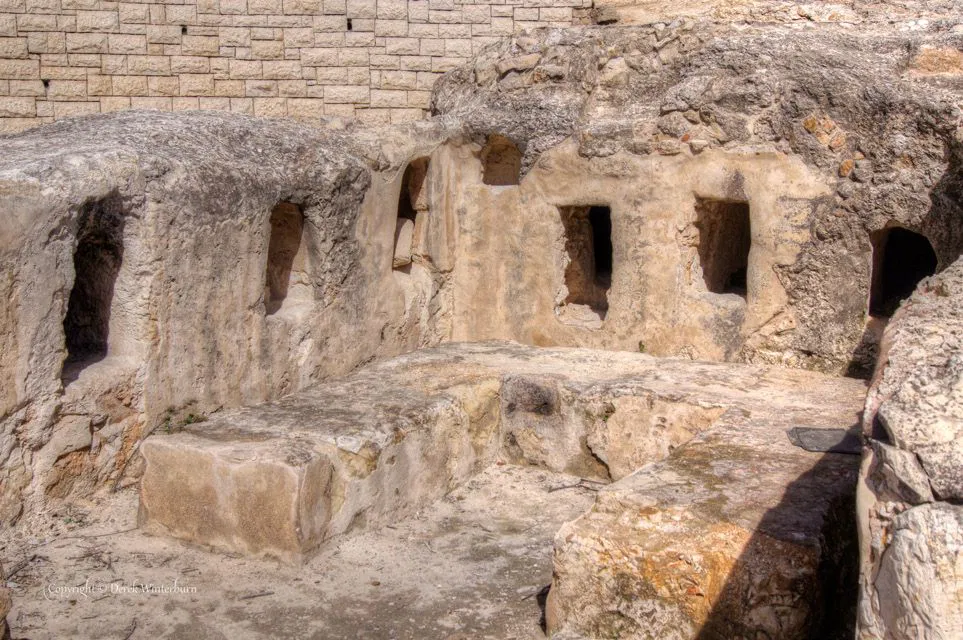The death and resurrection of Jesus Christ remain one of history’s most compelling narratives. As a humble Galilean artisan, Jesus challenged religious and political power and met a brutal end through crucifixion. Yet the Bible claims he rose from the dead just days later, launching a faith that would inspire billions. While the story holds immense religious significance, historians seek to uncover how much of it is backed by concrete evidence.
Among the details of Jesus’s life, his crucifixion is one of the best-attested historical facts. The Apostle Paul’s letters—written between 50 and 65 CE—mention it explicitly, and all four Gospels describe it. Non-Christian sources in the second century also reference it. Interestingly, early Christian art avoided depicting Jesus on the cross, but a piece of Roman graffiti from the second century mockingly portrays a crucified figure, possibly the earliest visual reference to Jesus.
Christian pilgrims walk the Via Dolorosa in Jerusalem to retrace Jesus’s journey from sentencing to execution. However, modern archaeology suggests they aren’t walking the actual path. The Bible says Jesus was sentenced in a “praetorium,” likely located in Herod’s Palace—not the Antonia Fortress where the Via Dolorosa begins. Excavations near the Tower of David in 2001 support this identification.
Evidence Supports Crucifixion Details, Church’s Significance, And Traditional Claims Of Jesus’s Burial Site
From the praetorium, Jesus was taken to Golgotha for crucifixion. Contrary to medieval art, he likely carried only the crossbeam, known as the patibulum, not the entire cross. The full structure could weigh up to 300 pounds, whereas the crossbeam was more manageable at around 75–90 pounds. Roman literature also confirms that criminals carried just the patibulum.
The Church of the Holy Sepulchre, believed by many to be built on the site of Jesus’s crucifixion and burial, is a major Christian pilgrimage site. While most crucifixions involved ropes, archaeological discoveries—including a first-century man found with a nail in his ankle—prove that nailing did occur. Although rare, this supports the Gospel account of Jesus being nailed to the cross.

The Gospels suggest Jesus was buried in a new tomb close to where he died, aligning with the layout of the Church of the Holy Sepulchre. This site houses the aedicule, the shrine believed to enclose Jesus’s tomb. The church is venerated by multiple Christian denominations, underscoring its religious significance despite questions about its precise historical accuracy.
Scholars Debate Jesus’s Burial Site, Golgotha’s Location, And The Resurrection’s Authenticity
Protestant archaeologists in the 19th century questioned whether the Church of the Holy Sepulchre was the true location, since it was built centuries after Jesus’s death. Charles Gordon, among others, identified the Garden Tomb as a more likely site. However, archaeology later showed that this tomb dates to the Iron Age, far too early to have been Jesus’s.
Some scholars now suggest Golgotha was not a hill but a quarry near the city gate, where criminals were executed publicly. This theory, proposed by Joan Taylor, fits Roman practices better, as public crucifixions were intended as warnings. Such a site would have been visible to passersby, making it a plausible alternative to the traditional hilltop image.
While the Gospels say Jesus was buried before sundown, some scholars argue he may not have been buried at all, aligning with typical Roman practice for executed criminals. Yet Jewish customs demanded burial before sunset, especially before Passover. Historian Josephus confirms this practice, suggesting Jesus’s burial was plausible even under Roman rule.
The resurrection is central to Christian belief, but historical evidence is elusive. The empty tomb, supernatural appearances, and resurrection stories reflect common ancient beliefs in post-death encounters. Some skeptics suggest Jesus’s body was stolen or his followers had grief-induced visions. Despite the lack of definitive proof, the earliest Christians genuinely believed in the resurrection, sparking a movement that changed the world.


